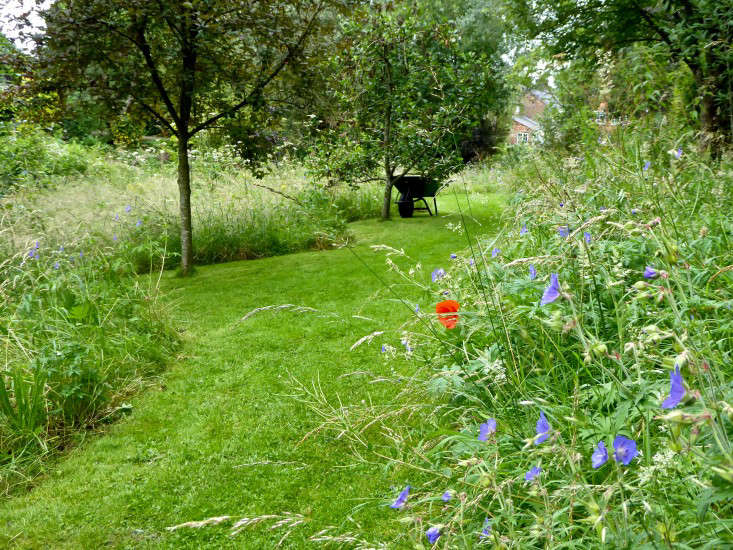Lady’s Mantle, Alchemilla mollis: “Gentle Alchemy”
Alchemilla mollis is ubiquitous in English cottage gardens for good reason. Lady’s mantle is an unfussy, low-maintenance plant that looks fabulous at the front of borders from early spring, when foliage starts to appear, through late autumn.
This herbaceous perennial, which is semi-evergreen, produces a neat mound of lush scallop-shaped leaves that are finely serrated at the edges. From June to September, the plant also produces frothy sprays of vivid chartreuse flowers. These well-behaved mounds look wonderful in and around paving and paths, and the color works particularly well with rusty-toned brickwork and terracotta.
Photography by Britt Willoughby Dyer for Gardenista.

The plant’s common name is said to have come from an ancient legend of it being used to adorn the Virgin Mary, as her cloak was thought to resemble its scalloped leaves.

Cheat Sheet
- As a front-of-the-border plant, lady’s mantle is an excellent foil to blues and purples, pairing particularly well with other garden stalwarts such as the cranesbill geranium ‘Rozanne’.
- This adaptable plant will grow in almost any position from dry shade to full sun, although in the latter it will need watering. In shade it looks wonderful paired with lacy ferns and velvety hostas. It’s also rabbit- and deer-proof.
- This plant will self-seed, which for many gardeners is a welcome addition. (Cut down the flowering stems before they set seed if you want to keep it in check.)
- The acid flowers are popular for cutting and can be used fresh or dried.

Keep It Alive
Cut any remaining foliage to the ground in early spring and it will quickly start to regrow. After the first flush of flowers, cut the stems back and the plant may produce another wave of flowers.
Give these plants space to grow, allowing at least a foot around them for growth and good air circulation. To produce new plants you can divide established mounds in spring or autumn and replant.
For more growing and care tips, see Lady’s Mantle: A Field Guide to Planting, Care & Design. For more of our favorite companions to plant with lady’s mantle, see our curated Garden Design 101 guides to Flowering Perennials and Ground Covers, including plant guides for Bacopa, Ivy, and Alyssum.









Have a Question or Comment About This Post?
Join the conversation